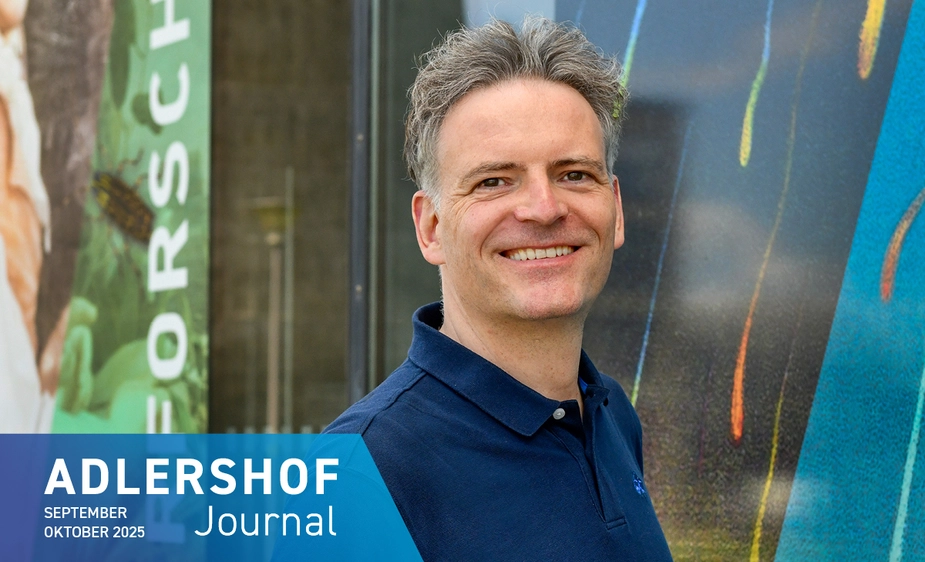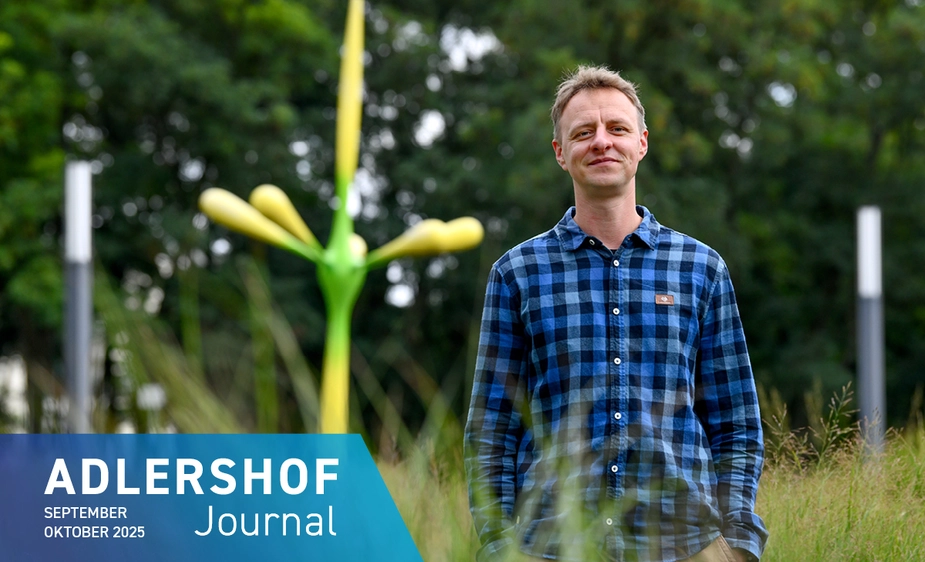Fully charged
The newly founded Berlin Battery Lab (BBL) combines the expertise of three research institutions
The newly founded Berlin Battery Lab (BBL) combines the expertise of the German Federal Institute for Materials Research and Testing (BAM), the Helmholtz-Zentrum Berlin (HZB) and the Humboldt University of Berlin (HU) to further the development of sustainable battery technologies.
The print hanging in the office of Philipp Adelhelm depicts a world-famous piece of art: “The Great Wave of Kanagawa” by Katsushika Hokusai. The Japanese artist used Prussian blue for his woodblock print from 1831, a colour pigment invented by chance over 300 years ago by a pharmacist from Berlin.
Around ten years ago, the chemical compound and its variants consisting of iron, carbon, nitrogen, and sodium were rediscovered – not as an affordable colouring for artwork, but as a storage material in batteries.
“These so-called Prussian blue analogues are a very intensive field of research worldwide,” says renowned electrochemist and materials scientist, Philipp Adelhelm. He is a professor at the Institute of Chemistry at Humboldt University in Berlin and was recently awarded the Berlin Science Prize for his research into the development of sustainable batteries.
He heads a joint research group at HU and the Helmholtz-Zentrum Berlin (HZB), which investigates how batteries behave during use, how they age, and how their lifespan can be extended. As a result of this bridging function, he is now also a scientific spokesperson for the newly founded Berlin Battery Lab (BBL) together with his colleague Tim Fellinger from the Federal Institute for Materials Research and Testing (BAM).
The laboratory combines the expertise of HU, HZB, and BAM with the aim of establishing Berlin as a location for research into sodium-ion batteries as well as lithium-sulphur and sodium-sulphur batteries. All three partner institutions contribute their respective strengths to further develop sustainable technologies. This is something of great importance in an increasingly protectionist trading world in order to become less dependent on raw materials and more technologically independent in manufacturing in Europe. BAM is internationally recognised for its expertise in the field of battery safety and electrochemical materials. HU is a leader in sodium-ion battery research, and HZB conducts research on sulphur batteries and operates the large-scale research facility BESSY II, which enables measurements to be carried out during operation.
“We are trying to draw together our ongoing research projects. We are not starting from scratch, but have now reached a critical mass,” says Adelhelm. “Combining our strengths under the BBL label has made us more visible.” This also makes it easier to cooperate with companies and can speed up processes, such as when it comes to implementation.
At present, everything is still being financed from the current budgets of the three partner institutions. “We don’t yet have any third-party funding in the start-up phase; everyone is contributing their own investments,” says Björn Mieller from BAM. Mieller uses his doctorate in materials engineering to work on ceramic solid electrolytes for applications in battery technology. He is supervising a planned research project within the BBL and is also responsible for coordination between the three institutions. He points out that the BBL is not designed as a basic research project, but as a transfer laboratory with the goal of making the path to application easier for industrial partners. “If we have all the experts sat around one table so to speak, from the basics to the setting of standards, then we can significantly shorten the market entry processes,” explains Mieller.
Through his research into Prussian blue, Adelhelm highlights the synergies which can result from collaboration between HU, HZB, and BAM. One of his doctoral students is currently researching Prussian blue and producing the material. BAM can then conduct the relevant safety tests, while HZB examines the details of the material, for example how the iron it contains reacts chemically. This is the only way to discover how safe, sustainable, and scalable Prussian blue can be as a storage material. “This example shows us just how much we need all hands on deck, from across the institutions.”
Heike Gläser for Adlershof Journal

